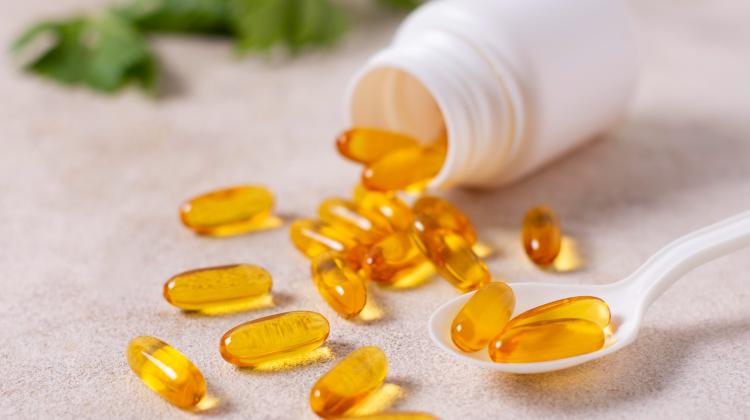In summer and sunny weather, we start to be interested in cosmetics with a filter marked with various abbreviations, e.g. SPF and symbols such as UVA, Blue Light, etc. What is it really like with this sun and is protection against it necessary? For centuries, it was believed that being in the sun was healthy for us. Research shows that being in the sun - in short - improves our mood and our bodies produce vitamin D. But there is also scientific evidence that with excessive exposure to the sun, the likelihood of certain diseases increases. Among them, one of the most malignant and deadly cancers is melanoma.
What do cosmetics with SP give us?
UVB and UVA rays reach the earth. UVB radiation causes a beautiful tan, but is also responsible for sunburn, further weakens our immune system and damages the DNA of cells, which can lead to the formation of cancer. Fortunately, some of this radiation is effectively absorbed by clouds and window panes. Therefore, for years it was claimed that you cannot tan through the window or on a cloudy day. There is nothing more wrong. UVA radiation is not absorbed by clouds and window panes. It is characterized by a slightly lower reactivity than UVC and UVB radiation, so it does not cause burns, but it can cause DNA damage or mutations. It also weakens our immune system, accelerates skin aging, causes photosensitivity and phototoxic reactions when using certain drugs. The impact of UVA rays on the skin accumulates over the years, which is why it is considered to be more insidious than UVB. Thanks to science, we know how to fight against the harmful effects of sunlight - e.g. by using protective clothing and, above all, sunscreen. Currently, the cosmetics industry provides us with preparations that effectively protect against UVA and UVB radiation.
Is once a day enough?
Hence the questions of when is the sun safe and when is it not? A very big facilitation in solving this type of dilemmas is the parameter created by scientists - the UV index. It is an eleven-point scale that determines the amount of UV radiation reaching the earth's surface in a given area, and thus also affecting people. The UV index has been divided into 3 ranges: 1-2 no protection (no need to use sunscreen, avoid the sun and wear appropriate clothing), 3-7 recommended protection (staying in the shade in the afternoon, using appropriate clothing, hats and sunglasses and sunscreen) and 8-11+ high protection (it is recommended to avoid being outdoors in the afternoon, seek shade, wear protective clothing, hats and sunglasses, and use sunscreen) . Current UV index values for each day can be found on the website of the Institute of Meteorology and Water Management. In addition, many websites and applications presenting the weather provide current UV indexes.
What is the difference between 10/15/20/30/50 SPF products?
Cosmetics that declare protection against the sun on the packaging must have the SPF factor (Sun Protection Factor), i.e. an indicator of protection against UVB radiation. Colloquially speaking, it means how much longer (compared to the skin not protected with sunscreen) we can stay in the sun after applying the cosmetic without fear of sunburn. In the European Union, products declaring an SPF of at least 6 are considered sunscreen cosmetics. On store shelves, you can see products with various values of this factor, e.g. It has been proven that the sun protection value changes logarithmically depending on the SPF. This means that with SPF values above 50, it only changes by hundredths of a percent. Therefore, choosing a cream with SPF 50+ and 100+ will provide similar sun protection. For the latter, however, we will pay much more. All cosmetics declaring sun protection must have the SPF factor marked, which proves protection against UVB rays. But what about protection against equally harmful UVA radiation? For years, UVA radiation has been underestimated. Currently, along with the development of science, cosmetics have also been developed to protect against the entire range of UV radiation that reaches the earth's surface. If on the packaging of a sunscreen cosmetic next to SPF there is a sign:
this means that the cosmetic also protects against UVA radiation, while the protection value is at least 1/3 of the SPF value.
Do we need protection all year round?
Given the damaging effects of the sun, everyone should use sunscreen during the summer months. The SPF value should be chosen for your skin type and physiological parameters, because we have a different tendency to sunburn. However, it is recognized that fair-skinned people should choose cosmetics with higher SPF values, while dark-skinned people can choose products with lower SPF values. However, it should be remembered that dermatologists warn that all children and the elderly should avoid sunbathing and use sunscreen cosmetics that provide high protection (SPF 50+). In turn, cosmetologists advise clients not to leave the house without applying sunscreen (preferably SPF 50+) all year round.
Let's summarize:
What do cosmetics with SPF give us?
SPF indicates protection against UVB rays. However, today most cosmetics declare protection against UVA. Look for the UVA mark in the "circle".
What is the difference between 10/15/20/30/50 SPF products?
The SPF value means how much longer (compared to the skin not protected by sunscreen) we can stay in the sun after using the cosmetic without fear of sunburn.
Which products are worth choosing?
Cosmetics with a filter should be chosen according to their intended use: for example, waterproof cosmetics are recommended for the beach, lighter formulas are recommended for everyday use (e.g. light moisturizing cream). In addition, a lot depends on the preferences of the consumer.
Can we buy safe cosmetics only in the pharmacy?
Not only. If the manufacturer declares a specific SPF factor, then the cosmetic should be characterized by the indicated protection. Of course, a sunscreen cream may contain other ingredients with a specific effect (e.g. moisturizing, anti-wrinkle), which will determine the "better" effect of the cosmetic.
How long does sunscreen protect?
It depends on the amount of the cosmetic applied. It is recommended to reapply sunscreen, e.g. after getting out of the water or every 40 minutes if you are constantly in the sun. On the other hand, if we use sunscreen on our face while going to work, it is proper care (it is difficult to apply sunscreen over makeup).
What are the risks of not using sunscreen?
The first and most visible effect is sunburn. After some time, discoloration and pigmentation changes may appear. In extreme cases, cancer.
Do we need protection all year round?
It is recommended to use sun protection all year round.
Who are the special products for?
There is a group of sunscreen cosmetics dedicated to children's skin, or those prone to sunburn. Such preparations will contain raw materials that are inert to the skin. Very often these are fragrance-free products.
How long can you stay in the sun after applying SPF 6 and SPF 50?
SPF means how much longer (compared to the skin not protected by sunscreen) we can stay in the sun after applying the cosmetic without fear of sunburn. For example, if a person with a certain complexion burns after 10 minutes of being in the sun, then after applying SPF 6 cream, they can stay in the sun for 60 minutes, assuming that they have applied the recommended dose of the product of 2 mg/cm2. However, the same person, after applying SPF 50, can stay in the sun for about 500 minutes with the same dose of the product per unit area.
Glossary:
UVA – ultraviolet radiation with a wavelength of 320-400 nm
UVB - ultraviolet radiation with a wavelength of 290-320 nm
UVC – ultraviolet radiation with a wavelength of 200-290 nm
SPF - Sun Protection Factor
Sunburn
Most publications on sunburn are based mainly on surveys and do not take into account variables such as age, clinical situation and demographic characteristics of patients. According to researchers from Baylor College of Medicine in Houston, sunburn is most often diagnosed among women and very young people. Although they are the most common cause of the development of melanoma, very few people report them to doctors – out of all visits recorded in the database (123 million patients in the US), only 0.15 percent was about social burn. It is worth emphasizing that sunburn is an avoidable risk factor for skin cancer, the incidence of which is constantly increasing. Meanwhile, there is a lack of research on the frequency of this phenomenon, the methods of its treatment and the frequency of reporting it to doctors, all of which could help to develop more effective countermeasures, such as educational activities aimed at vulnerable groups.
Melanoma
According to the American Cancer Society, skin cancer is by far the most common of all cancers. Although melanoma accounts for only about 1% of skin cancer cases, it accounts for the vast majority of deaths from this type of cancer. Melanoma is more than 20 times more common in whites than in blacks. Overall, the lifetime risk of developing melanoma for Caucasians is approximately 2.6%, 0.1% for Blacks, and 0.6% for Hispanics. Many different factors can affect the risk for each person. The risk of melanoma increases with age. The average age of diagnosis is 65 years. But melanoma is not uncommon even among people under 30. In fact, it is one of the most common cancers in young adults (especially young women).




